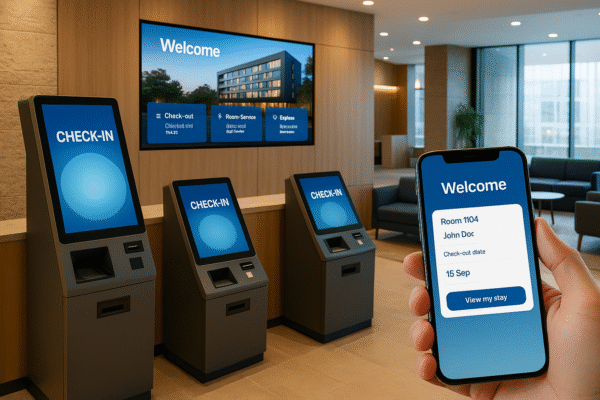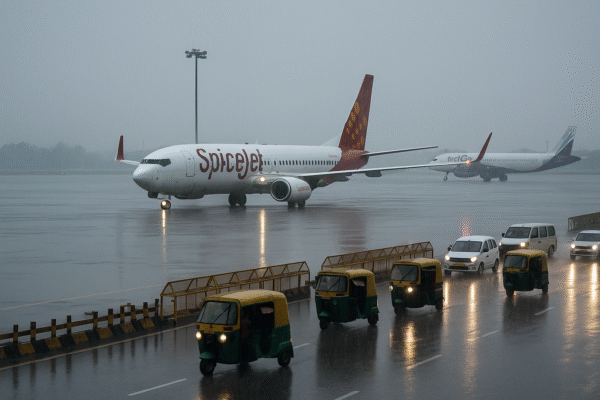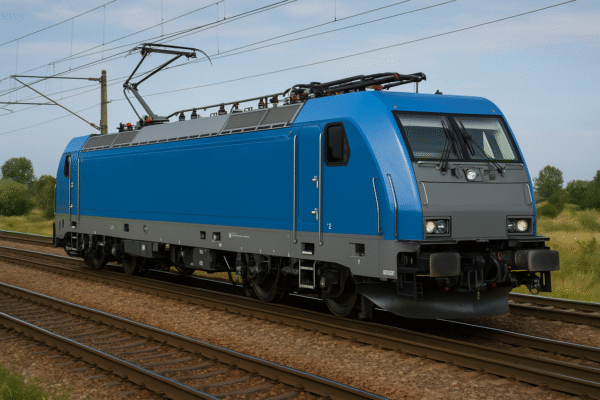Alstom, a global leader in sustainable mobility solutions, has achieved a major milestone in railway innovation. The European Railway Agency (ERA) has granted type approval for the company’s Traxx Universal locomotive, equipped with the advanced EbiCab 2000 European Train Control System (ETCS). This certification allows the locomotive to operate seamlessly across multiple European rail networks, marking a new chapter in rail safety, operational efficiency, and cross-border interoperability.
This achievement is a crucial step forward for the modernization of Europe’s rail infrastructure. By aligning with the latest ETCS Baseline 3 standard, Alstom has strengthened the foundation for unified, safer, and smarter railway operations across the continent.
The Importance of ETCS Technology
The ETCS signalling system is designed to standardize train control across Europe, replacing disparate national systems with a common platform. This ensures that trains can move seamlessly between countries, reducing delays, enhancing safety, and boosting efficiency for both passenger and freight services.
With the Traxx Universal locomotive now fully approved, operators can carry out uninterrupted journeys along international corridors that comply with ETCS standards. This breakthrough is essential for fostering greater integration of European rail services, allowing for smoother transitions between national networks and improved safety for all users.
Dan Kurucz, Alstom’s Managing Director for the Czech Republic and Slovakia, emphasized the impact of the approval: “Cross-border traffic is vital for freight transport in Europe. With the fully approved VR01.5 version, our customers can operate locomotives on key corridors spanning Germany, Austria, Poland, Czech Republic, Slovakia, Luxembourg, Hungary, Croatia, Slovenia, and Serbia.”
Reopening Rail Operations in Austria
One immediate impact of this approval is the revitalization of Austrian rail corridors. Previously, Austria had restricted operations on dual-equipped Class B lines to ETCS-only systems. With Alstom’s certification, these corridors are now reopened, enabling operators to run services with greater efficiency and fewer limitations.
This development is not only a victory for Austrian railways but also a significant contribution to Europe’s wider goal of interoperability. As more nations adopt ETCS standards, locomotives like the Traxx Universal will serve as key enablers of cross-border connectivity.
Expanding Opportunities for Czech Freight Operators
The certification brings particular benefits to Czech freight operators, including RegioJet and ČD Cargo. RegioJet’s fleet of 388 series locomotives will now be able to cross European borders without technical barriers, offering unparalleled flexibility for freight movement.
Currently, 13 locomotives in the RegioJet pool (numbers 388 219–231) have been delivered with the VR01.5 software. Six are already operational within the Czech Republic, and the remainder have now gained international approval to serve across European networks. This development provides a strong boost to the Czech freight sector, allowing companies to expand services and strengthen their role in continental logistics.
At the same time, Metrans, another key Czech freight operator, is upgrading its 386 series locomotives with Onvia Cab on-board units (formerly Atlas). This will bring them in line with ETCS standards and reinforce their integration with Europe’s evolving rail system.
Upgrading the Traxx Class 388 Fleet
For both RegioJet and ČD Cargo, the approval represents an important step in modernizing their fleets. Some locomotives still run with the older VR01.2 software, which does not support ETCS. However, these units are scheduled for gradual upgrades to the VR01.5 version, ensuring full compliance with the latest safety and interoperability standards.
This modernization program is central to maintaining competitiveness and ensuring that operators can fully benefit from Europe’s increasingly interconnected rail corridors.
A Leap Toward Smarter and Greener Mobility
Alstom’s success with the Traxx Universal locomotive illustrates the company’s broader commitment to smart, safe, and sustainable transport solutions. By equipping its locomotives with ETCS technology, Alstom is helping to:
- Increase safety by reducing human error and standardizing signalling across borders.
- Enhance efficiency by enabling seamless cross-border travel for both freight and passenger trains.
- Promote sustainability by supporting the shift of goods and passengers from road to rail, a greener mode of transport.
This approval is not simply a technical achievement—it is also a cornerstone in Europe’s ambition to build a unified rail system that is reliable, environmentally friendly, and competitive with other modes of transportation.
Strengthening Europe’s Rail Connectivity
The significance of the Traxx Universal approval extends well beyond the technical realm. It represents a broader effort to enhance European rail connectivity, linking key markets and reducing bottlenecks for freight and passenger services.
By harmonizing rail standards under ETCS, Europe is paving the way for more efficient logistics chains and smoother travel experiences. For freight operators, this means faster delivery times and fewer interruptions. For passengers, it translates into safer, more reliable, and more comfortable journeys across borders.
Looking Ahead
The ERA’s approval of Alstom’s Traxx Universal locomotive with EbiCab 2000 ETCS is a landmark moment for the future of European railways. As more locomotives are upgraded to the new standards, the continent will benefit from safer operations, faster journeys, and enhanced trade opportunities.
Alstom’s role in this transformation highlights its reputation as a leader in innovative rail technology. By driving interoperability, efficiency, and sustainability, the company is helping to shape the next generation of European mobility.
With freight companies like RegioJet, ČD Cargo, and Metrans adopting the new system, the Traxx Universal locomotive will become a cornerstone of Europe’s smarter and more interconnected rail network—bringing the continent closer to its vision of a seamless, sustainable, and future-ready transportation system.
For more travel news like this, keep reading Global Travel Wire
















